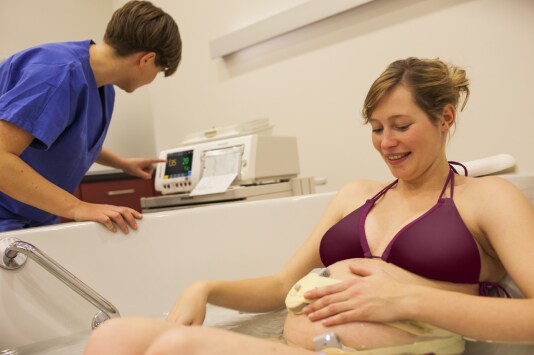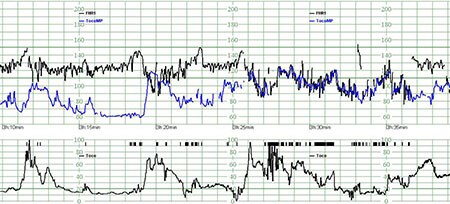Philips Smart Pulse Technology
Monitoring mothers and babies with confidence
Electronic fetal monitoring provides a valuable indication of fetal health. However, sometimes the maternal pulse is mistaken for the fetal heart rate, an error referred to as signal ambiguity from maternal heart rate, or maternal insertion. When this happens, problems with the fetus may go undetected. Smart Pulse technology differentiates between maternal pulse and fetal heart rate without the need of an additional sensor like SpO2 and ECG.

Why is there confusion?
In most cases, the fetal monitoring system easily detects fetal heart rate. In some cases, such as if there is no fetal heart rate or if a maternal vessel is over the fetal heart, it may confuse the maternal pulse with the fetal heart rate. Particularly when the mother is under stress, her pulse can be elevated, causing it to fall within the range of a normal fetal heartbeat. This elevated pulse may make it more difficult for the clinician to notice signal ambiguity. To prevent signal ambiguity from maternal heart rate, monitors perform coincidence detection. Coincidence detection continuously compares the maternal pulse or heart rate, as derived from maternal SpO2 or ECG measurements, to the fetal heart rate. When the two rates are the same, the monitor alerts the caregiver. All Philips Avalon Fetal Monitors perform this coincidence detection through a standard feature, called cross-channel verification (CCV). While traditional coincidence detection is effective, it requires that SpO2 and/or ECG are measured with separate sensors and/or electrodes. This can be uncomfortable for the mother, requires additional work for the clinician, and is not always standard hospital protocol.

How Smart Pulse works
Clinicians must closely monitor heart rate in both mother and child during labor and delivery. Unfortunately, at times there may be confusion between the two pulses, creating a situation in which clinicians don’t realize they are no longer monitoring the baby’s heart. Smart Pulse measures maternal pulse without additional sensors, electrodes and cables. This patented-protected feature leverages the Toco MP transducer, whose unique design measures both contractions and maternal heart rate. The Toco MP transducer has two sensors that measure maternal pulse just under the surface of the skin, preventing signal ambiguity.

Compare cross-channel verification (CCV) via SpO2 or ECG and Philips Smart Pulse for pulse measurement, comfort and ease of use.
| Feature | CCV via SpO2 or ECG | Smart Pulse |
| Pulse measurement Maternal pulse can be differentiated from heart rate |  |  |
| Patient Comfort Electrodes or SpO2 sensors are not required | |  |
| Ease of use Maternal pulse is continuously monitored with no extra clinician effort | |  |
Philips Obstetrical Care Solution
With Philips OB solution, you have the detailed information you need to document care from the very first antepartum visit through labor, delivery, postpartum, and follow-up care. For a lifetime of pregnancies. Discover how Philips continues to deliver what’s next in obstetrical care.
I really love the Smart Pulse technology. It is an outstanding tool. It allows us to identify the difference between the maternal and fetal pulse in labor.”
– Julia Ats, RN, RM, CM, Clinical midwife in charge of birthing suite
Burnside War Memorial Hospital
Adelaide, Australia
Smart Pulse in action
Women with high-risk pregnancies involving multiple births or high BMI often are confined to a bed so their baby can be monitored closely. This can cause pain and may even lengthen labor. However, cableless monitoring technology makes mobile labor possible, even in high-risk situations. View this brief video to learn how caregivers at Burnside Memorial Hospital use monitoring technology to offer mobility even to women with high-risk pregnancies.



